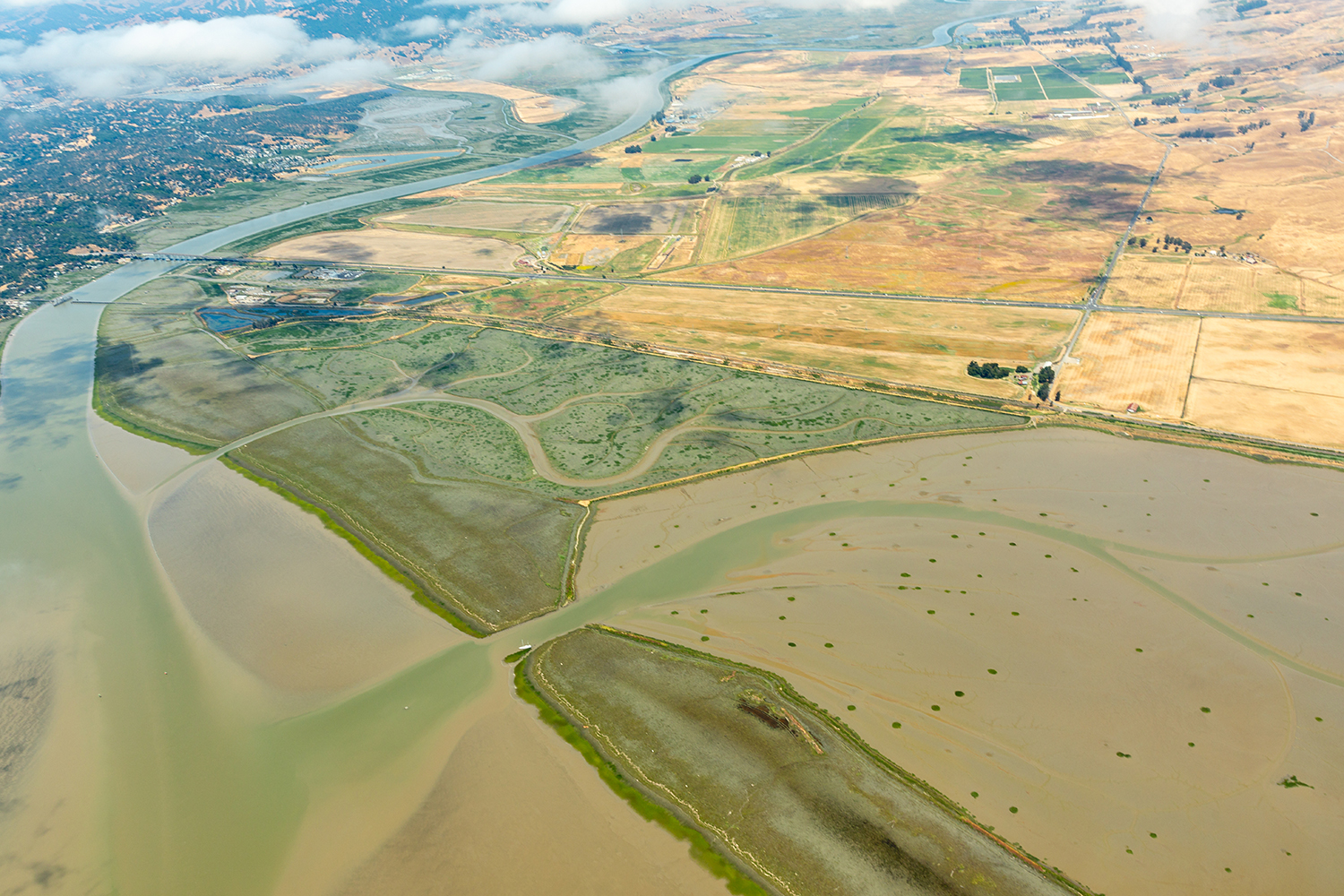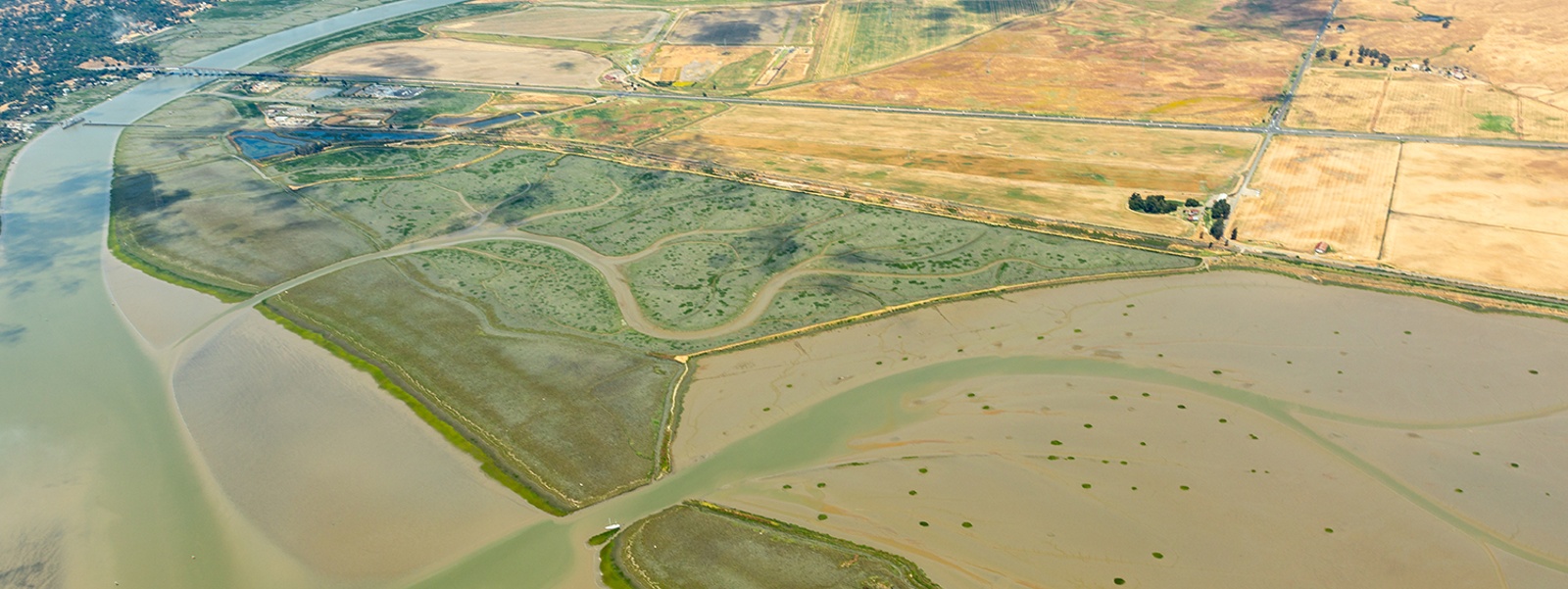Newsom budget proposes fast track for delta tunnel

Aerial view of patterns of agricultural fields and the San Francisco Bay where it meets the Sacramento River Delta.
Photo/Pete Niesen

By Caleb Hampton
Gov. Gavin Newsom’s $322 billion spending plan for 2025-26 has various impacts on California agriculture.
The governor released his revised budget last week, saying that the state faces a $12 billion budget deficit.
He cited rising costs associated with funding Medi-Cal as a primary cause of the budget shortfall. The health insurance program for low-income Californians reported a $6 billion overrun this year. Newsom also blamed the impact of tariffs on California’s economy for causing the budget deficit.
The budget revision includes a proposal to fast-track the construction of the Delta Conveyance Project, a $20-billion tunnel beneath the Sacramento-San Joaquin River Delta.
“For too long, attempts to modernize our critical water infrastructure have stalled in endless red tape, burdened with unnecessary delay. We’re done with barriers,” Newsom said in a statement. “Our state needs to complete this project as soon as possible, so that we can better store and manage water to prepare for a hotter, drier future. Let’s get this built.”
The tunnel would create a second route to move water to State Water Project pumps that transport water to urban and agricultural users south of the delta. The project supplies water to 27 million people and 750,000 acres of farmland.
Newsom has proposed simplifying the project’s permitting process and narrowing judicial review to limit litigation opposing the project.
“While the project has received some necessary permits, its path forward is burdened by complicated regulatory frameworks and bureaucratic delays,” the governor’s office said in a statement.
According to the California Department of Water Resources, the state could have pumped 952,000 acre-feet of water through the delta last year had the project been operational.
The revised budget includes a proposal, announced last month, to extend California’s Cap-and-Trade Program through 2045 and to rename the program Cap and Invest. The program, set to expire in 2030, requires companies that emit greenhouse gases to purchase permits, with the revenue generating roughly $4.2 billion per year for California’s Greenhouse Gas Reduction Fund.
Newsom has proposed dipping into those funds to reduce the spending burden on the state’s general fund. His proposed budget would shift $1.54 billion in funding for Cal Fire from the general fund to the GGRF on an ongoing basis. The money pays for Cal Fire’s fire prevention, fire control and resource management activities. The general fund would serve as a backstop for the department should funding through the GGRF not reach projected levels.
The proposed budget also allocates $1 billion in annual funds from the GGRF for the high-speed rail project “to establish a stable and predictable funding stream,” a budget summary from the governor’s office said.
The budget proposal does not say how the rest of the GGRF would be spent, but the funding levels laid out for Cal Fire and the high-speed rail project mean most of the fund would be spent on those two priorities. Historically, about 5% of the GGRF has been spent on agricultural programs that reduce emissions.
Many climate-related programs for farmers will be funded this year through Proposition 4, a $10 billion climate bond approved by voters in November. Programs receiving Proposition 4 funds this year include the State Water Efficiency and Enhancement Program, or SWEEP, the Healthy Soils Program, the California Farmland Conservancy Program and the Multibenefit Land Repurposing Program.
Also in the budget revision is a proposal to roll back California’s expansion of Medi-Cal coverage for low-income residents without legal immigration status.
The proposed changes to Medi-Cal would freeze enrollment for new undocumented adult recipients beginning in 2026 and introduce monthly premiums for some beneficiaries.
Under the proposal, Medi-Cal would no longer accept new undocumented enrollees aged 19 and older after January 2026. The approximately 1.6 million undocumented immigrants currently enrolled would retain their coverage, and children without legal status would remain eligible to sign up.
Newsom also proposed that adults with “certain statuses,” potentially including people in the country legally, pay a $100 monthly premium for Medi-Cal beginning in 2027.
In addition, the proposed Medi-Cal rollbacks include scrapping a rule that eliminated asset tests when determining eligibility for the health insurance program for seniors. During the past four years, the elimination of asset tests contributed to senior Medi-Cal enrollment growing by 40%, according to an analysis done by the state.
Altogether, the state estimated the proposed changes to Medi-Cal would save the state more than $5 billion.
During the next few weeks, legislators and the governor will negotiate a final budget for fiscal year 2025-26, with a June 15 deadline for the Legislature to pass a budget. Reauthorization of Cap and Trade and related GGRF investments may be negotiated as part of the budget or approved separately by August or September.
Caleb Hampton is assistant editor of Ag Alert. He may be contacted at champton@cfbf.com.




